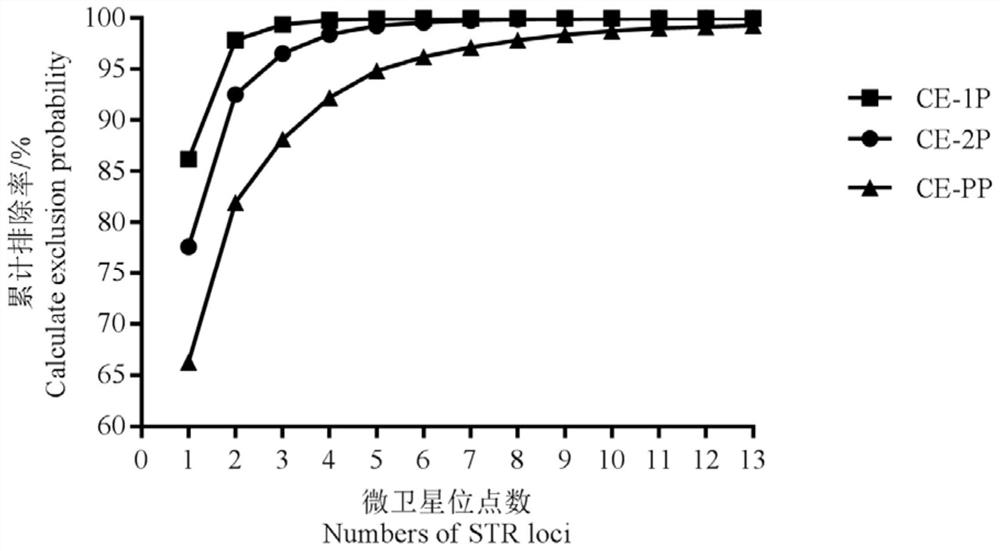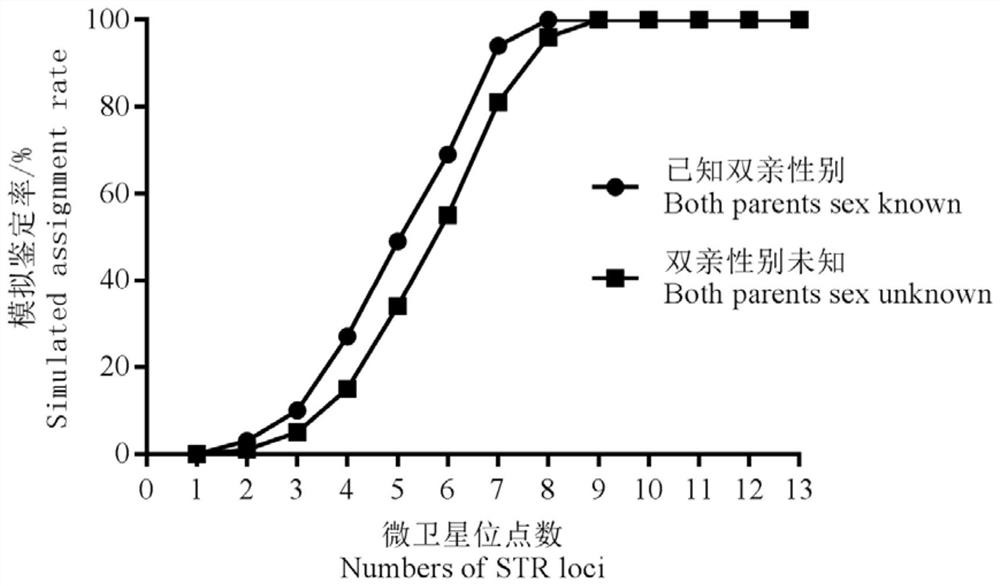A microsatellite marker parentage identification primer, method and application suitable for Nile tilapia, Olia tilapia and their hybrids
A technology of microsatellite markers and Nile tilapia, applied in biochemical equipment and methods, measurement/testing of microorganisms, DNA/RNA fragments, etc., can solve problems such as no microsatellite paternity identification methods, and achieve High polymorphism, improved efficiency, and improved accuracy
- Summary
- Abstract
- Description
- Claims
- Application Information
AI Technical Summary
Problems solved by technology
Method used
Image
Examples
Embodiment 1
[0031] A kind of microsatellite marker parentage identification method applicable to Nile tilapia, Olia tilapia and hybrids thereof, comprising the steps:
[0032] 1. Family construction: Using the parents of Nile tilapia and Olia tilapia preserved in this laboratory, after they are sexually mature, use artificial insemination to construct 3 Nile tilapia full-sib families, 2 A full-sib family of Olia tilapia and three full-sib families of Olia tilapia (Nile tilapia♀×Olia tilapia♂). Each family was numbered and reared independently, and 2 months after the fry hatched, the tail fin samples of the parents of each family and 32 to 35 offspring were collected as materials for paternity identification.
[0033] 2. Genomic DNA extraction: The caudal fin genomic DNA of the parent and offspring tilapias of each family in step 1 was extracted using an animal tissue micro DNA extraction kit (Magen).
[0034] 3. Screening of polymorphic microsatellite primers: 2 to 3 microsatellite loci ...
Embodiment 2
[0052] Practical application effect evaluation: paternity identification of tilapia "Yuemin No. 1" family
[0053] 1. Family construction and sampling: 5 female Nile tilapias were selected as female parents, and 5 super-male Nile tilapias were selected as male parents and Olia tilapia as female parents. This, the hybrid offspring obtained after backcrossing with the super-male Nile tilapia) was used as the male parent, and 5 full-sib families were constructed by one-to-one pairing, and the parents and 35 offspring of each family were collected after natural seedling production tail fin samples.
[0054] 2. Using the method of step 2 in Example 1 to extract the genomic DNA of the parents and offspring of the full-sib family of the above-mentioned 5 tilapia "Yuemin No. 1"; adopting the method of step 4 in Example 1 to adopt 13 pairs of fluorescently labeled microsatellites The primers were used for PCR amplification and ABI 3730xl sequencer for multiple capillary electrophoresi...
PUM
 Login to View More
Login to View More Abstract
Description
Claims
Application Information
 Login to View More
Login to View More - R&D
- Intellectual Property
- Life Sciences
- Materials
- Tech Scout
- Unparalleled Data Quality
- Higher Quality Content
- 60% Fewer Hallucinations
Browse by: Latest US Patents, China's latest patents, Technical Efficacy Thesaurus, Application Domain, Technology Topic, Popular Technical Reports.
© 2025 PatSnap. All rights reserved.Legal|Privacy policy|Modern Slavery Act Transparency Statement|Sitemap|About US| Contact US: help@patsnap.com



